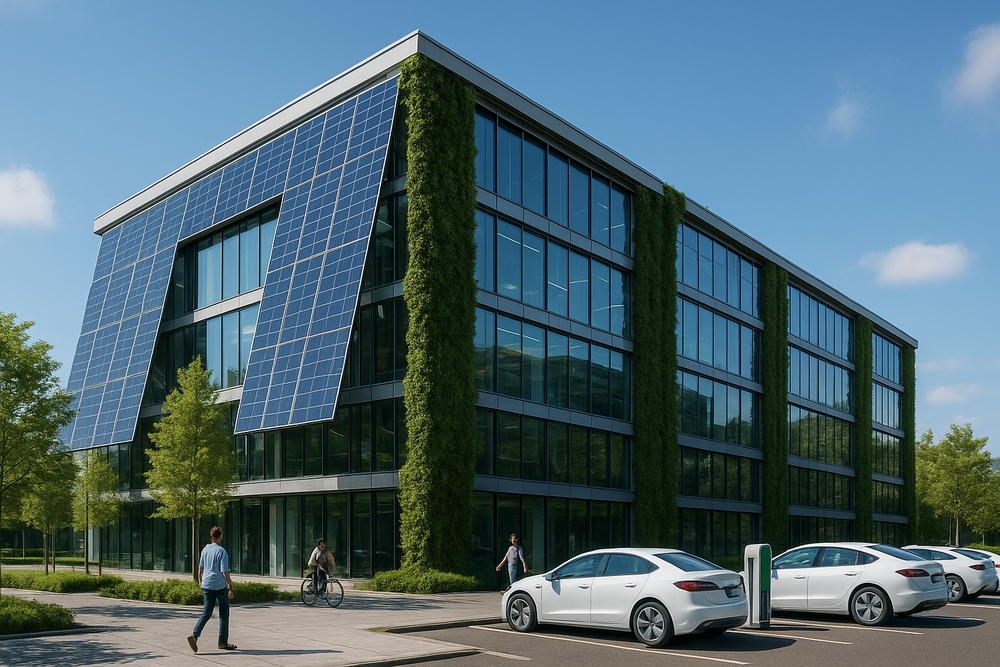Top Technology Trends That Will Define 2026
Owen Clarke
2025-10-16
6 min read

As we stand on the cusp of 2026, the technological landscape continues to evolve at an unprecedented pace. The convergence of artificial intelligence, quantum computing, sustainable technologies, and human-centric innovations is reshaping how we work, live, and interact with the world around us. Understanding these emerging trends isn't just about staying current with technology—it's about preparing for a future where these innovations will fundamentally transform industries and society as a whole.
Artificial Intelligence Reaches New Heights of Integration
Artificial intelligence has moved far beyond experimental phases and is now becoming deeply embedded in everyday applications. In 2026, we're witnessing the emergence of truly conversational AI systems that can engage in complex, contextual discussions across multiple domains. These systems are no longer limited to simple question-and-answer formats but can participate in collaborative problem-solving and creative endeavors. The integration of AI into professional workflows has reached a tipping point where it's becoming indispensable rather than optional. Legal professionals are using AI to analyze contracts and predict case outcomes with remarkable accuracy. Healthcare workers are leveraging AI diagnostic tools that can identify patterns in medical data that human practitioners might miss. Marketing teams are employing AI systems that can create personalized content at scale while maintaining brand consistency and emotional resonance. What makes 2026 particularly significant is the democratization of AI development. Low-code and no-code platforms are enabling businesses and individuals without extensive technical backgrounds to create custom AI solutions. This shift is accelerating innovation across industries and reducing the barrier to entry for AI adoption.
Quantum Computing Moves from Laboratory to Real-World Applications
Quantum computing has finally begun delivering on its long-promised potential. While still in its early stages of commercial deployment, quantum systems are now solving specific problems that classical computers cannot handle efficiently. Financial institutions are using quantum algorithms to optimize portfolio management and detect fraud patterns. Pharmaceutical companies are leveraging quantum computing to simulate molecular interactions for drug discovery, potentially reducing development timelines from years to months. The most significant breakthrough in 2026 is the development of hybrid quantum-classical systems that combine the strengths of both computing paradigms. These systems can tackle complex optimization problems in logistics, supply chain management, and resource allocation with unprecedented efficiency. Major technology companies are offering quantum computing services through cloud platforms, making this powerful technology accessible to organizations that couldn't previously afford dedicated quantum hardware. The implications extend beyond computational power. Quantum cryptography is beginning to reshape cybersecurity, offering theoretically unbreakable encryption methods that could revolutionize how we protect sensitive information. As quantum computing capabilities expand, we're also seeing the emergence of quantum-resistant security protocols designed to protect against future quantum-based attacks.

Sustainable Technology Takes Center Stage
Environmental consciousness has become a driving force behind technological innovation in 2026. Clean technology solutions are no longer niche alternatives but mainstream necessities that are reshaping entire industries. Advanced battery technologies are enabling electric vehicles to achieve ranges that surpass traditional gasoline cars while charging times continue to decrease dramatically. Smart grid technologies powered by AI are optimizing energy distribution in real-time, reducing waste and integrating renewable energy sources more effectively than ever before. Buildings are becoming self-sustaining ecosystems that generate their own power, manage water consumption intelligently, and adapt their environmental conditions based on occupancy and weather patterns. Perhaps most significantly, carbon capture and utilization technologies are scaling up from pilot projects to industrial implementation. Companies are not just reducing their carbon footprints but actively removing carbon dioxide from the atmosphere and converting it into useful products. This circular approach to carbon management represents a fundamental shift from damage limitation to environmental restoration.
Extended Reality Reshapes Human Experience
The boundaries between physical and digital experiences continue to blur as extended reality technologies mature. Virtual reality has evolved beyond gaming and entertainment to become a legitimate tool for education, training, and remote collaboration. Medical students are performing virtual surgeries with haptic feedback that closely mimics real procedures. Engineers are designing and testing products in virtual environments before creating physical prototypes. Augmented reality applications have become seamlessly integrated into daily life. Navigation systems overlay digital information directly onto real-world environments, making it easier to find locations and understand spatial relationships. Retail experiences allow customers to visualize products in their own spaces before making purchases, significantly reducing return rates and increasing customer satisfaction. The most transformative development is the emergence of mixed reality environments where multiple users can interact with both physical and digital objects simultaneously. These shared virtual spaces are revolutionizing remote work, enabling teams to collaborate as if they were in the same physical location while accessing digital tools and information in intuitive ways.
Biotechnology and Digital Health Convergence
The intersection of biology and technology has produced remarkable innovations that are personalizing healthcare like never before. Wearable devices now continuously monitor not just basic vital signs but complex biomarkers that can predict health issues before symptoms appear. AI algorithms analyze this data in real-time to provide personalized health recommendations and alert healthcare providers to potential problems. Gene therapy technologies have become more precise and accessible, allowing for targeted treatments of genetic disorders that were previously considered incurable. CRISPR and other gene-editing technologies are being used not just for treatment but for disease prevention, offering the possibility of eliminating hereditary conditions at their source. Mental health technology has also seen significant advancement, with AI-powered therapeutic tools providing personalized cognitive behavioral therapy and mood management support. These digital mental health solutions are filling gaps in traditional healthcare systems and making mental health support more accessible to underserved populations.
Looking Ahead: The Interconnected Future
The defining characteristic of 2026's technology trends is their interconnectedness. These innovations don't exist in isolation but work together to create synergistic effects that amplify their individual impacts. AI enhances quantum computing algorithms, sustainable technologies are powered by smart energy systems, and biotechnology applications rely on advanced computing power to analyze complex biological data. As we move through 2026, the organizations and individuals who thrive will be those who understand not just individual technologies but how these trends intersect and reinforce each other. The future belongs to those who can navigate this interconnected technological landscape with creativity, adaptability, and a clear vision of how these tools can be used to solve real-world problems and improve human lives. The technology trends defining 2026 represent more than just incremental improvements—they signal a fundamental shift toward a more intelligent, sustainable, and human-centered technological future. The question isn't whether these technologies will reshape our world, but how quickly we can adapt to harness their potential for positive change.


